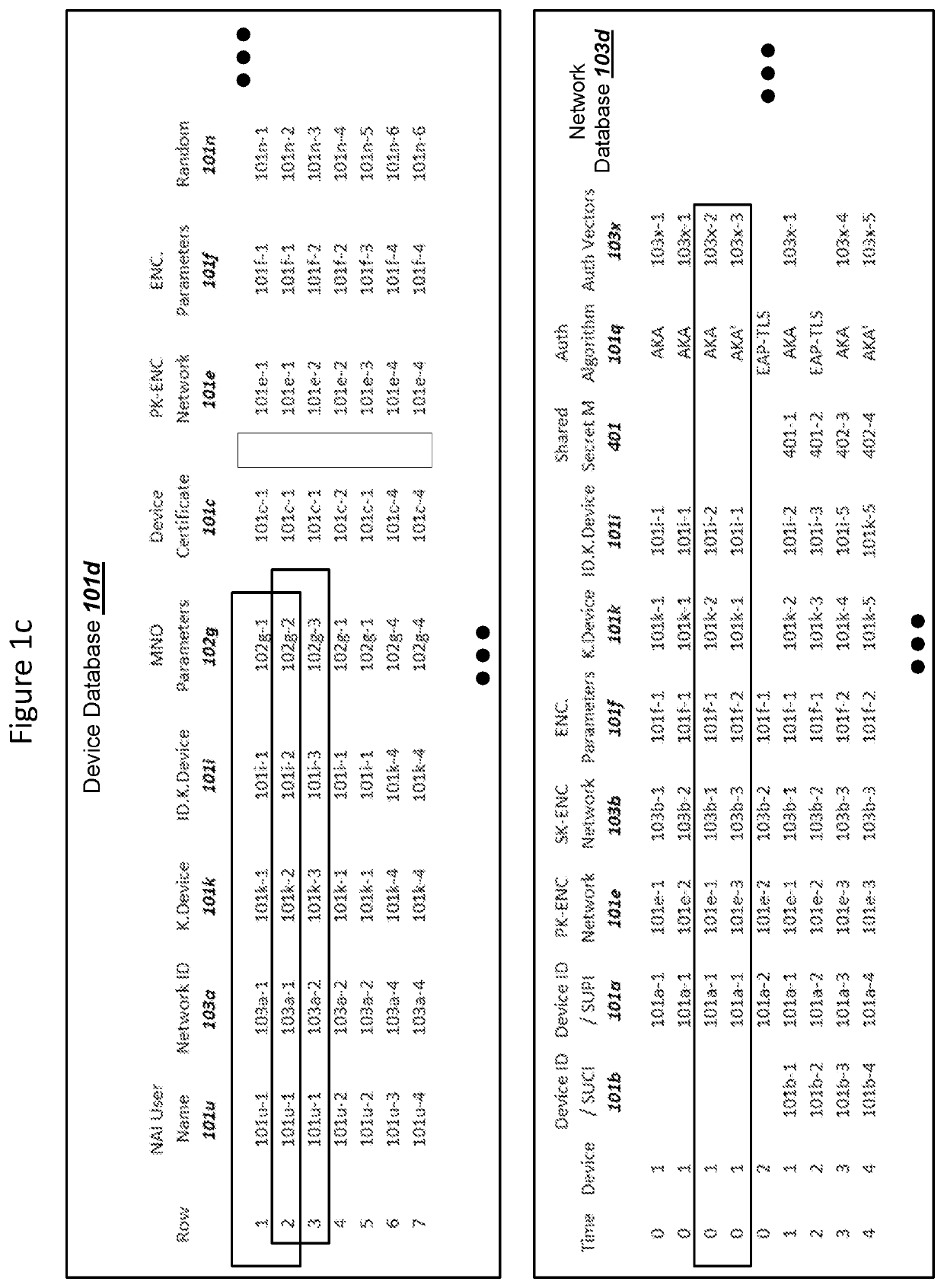Subscription Concealed Identifier (SUCI) Supporting Post-Quantum Cryptography
a subscription concealed identifier and cryptography technology, applied in the field of subscription concealed identifiers (suci) supporting post-quantum cryptography, can solve the problems of reducing the security of the subscription concealed identifier using conventional technology pqc asymmetric encryption, creating challenges in the ciphertext value of a user or device identity, and reducing the security of the subscription concealed identifiers
- Summary
- Abstract
- Description
- Claims
- Application Information
AI Technical Summary
Benefits of technology
Problems solved by technology
Method used
Image
Examples
Embodiment Construction
[0028]FIG. 1a
[0029]FIG. 1a is a graphical illustration of an exemplary system, where a device communicates data with a mobile network operator and a network in order to mutually authenticate and secure communications with the network, in accordance with exemplary embodiments. The system 100 can include a device 101, a mobile network operator 102, a network 103, and a device provider 104. The depicted nodes or entities can communicate data 106 over an Internet Protocol (IP) network 107. Although a single device 101, a single mobile network operator 102, a single network 103, and a single device provider 104 are depicted in FIG. 1, a system 100 can comprise a plurality of each of the depicted nodes or entities. A system 100 as depicted in FIG. 1 can support either (i) an Authentication and Key Agreement (AKA) protocol such as, but not limited to, the AKA protocol specified for 5G wireless networks in TS 133 501 V15.1.0, or (ii) EAP-TLS authentication for wireless WAN networks, such as...
PUM
 Login to View More
Login to View More Abstract
Description
Claims
Application Information
 Login to View More
Login to View More - R&D
- Intellectual Property
- Life Sciences
- Materials
- Tech Scout
- Unparalleled Data Quality
- Higher Quality Content
- 60% Fewer Hallucinations
Browse by: Latest US Patents, China's latest patents, Technical Efficacy Thesaurus, Application Domain, Technology Topic, Popular Technical Reports.
© 2025 PatSnap. All rights reserved.Legal|Privacy policy|Modern Slavery Act Transparency Statement|Sitemap|About US| Contact US: help@patsnap.com



